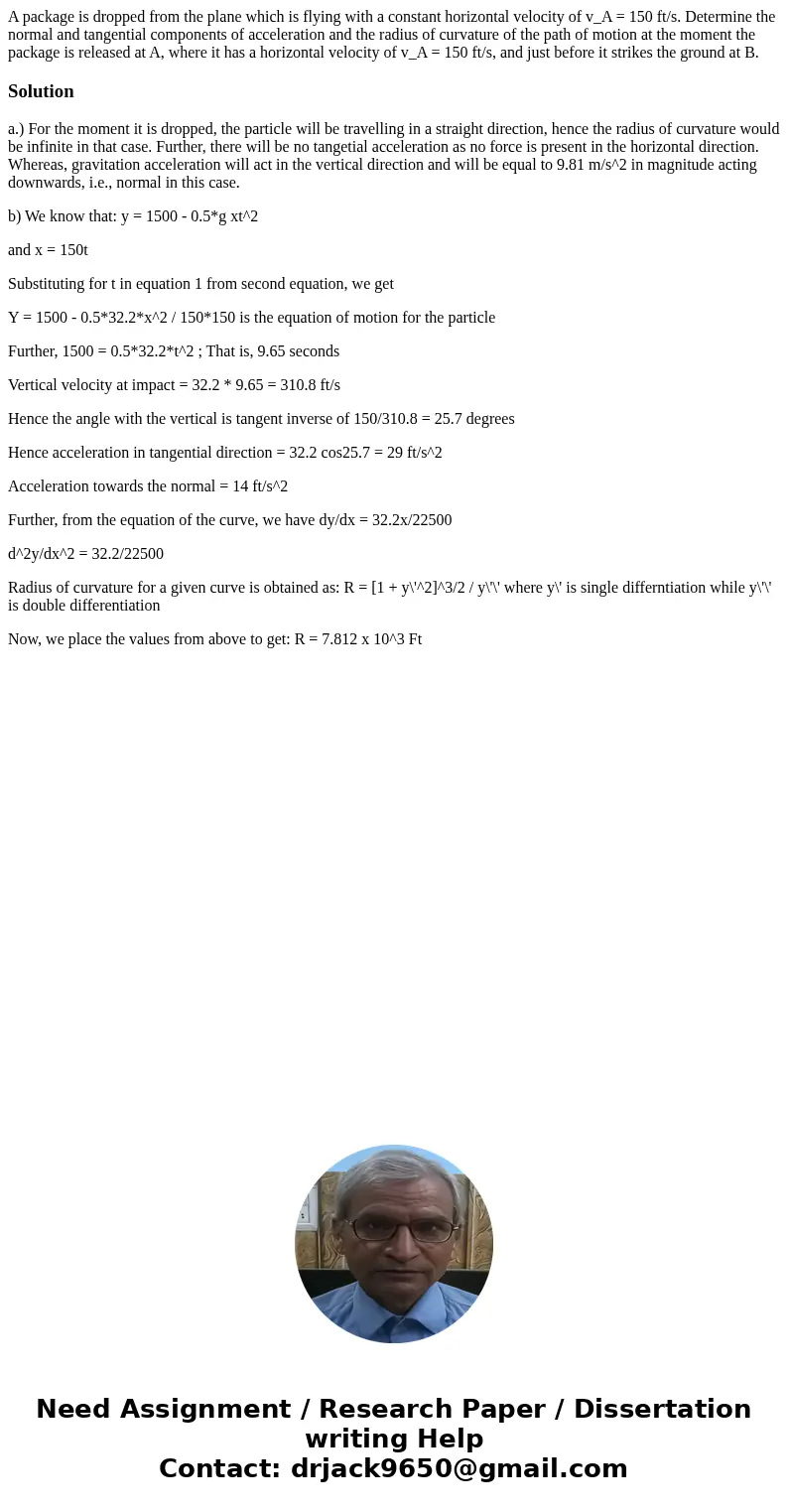A package is dropped from the plane which is flying with a c
Solution
a.) For the moment it is dropped, the particle will be travelling in a straight direction, hence the radius of curvature would be infinite in that case. Further, there will be no tangetial acceleration as no force is present in the horizontal direction. Whereas, gravitation acceleration will act in the vertical direction and will be equal to 9.81 m/s^2 in magnitude acting downwards, i.e., normal in this case.
b) We know that: y = 1500 - 0.5*g xt^2
and x = 150t
Substituting for t in equation 1 from second equation, we get
Y = 1500 - 0.5*32.2*x^2 / 150*150 is the equation of motion for the particle
Further, 1500 = 0.5*32.2*t^2 ; That is, 9.65 seconds
Vertical velocity at impact = 32.2 * 9.65 = 310.8 ft/s
Hence the angle with the vertical is tangent inverse of 150/310.8 = 25.7 degrees
Hence acceleration in tangential direction = 32.2 cos25.7 = 29 ft/s^2
Acceleration towards the normal = 14 ft/s^2
Further, from the equation of the curve, we have dy/dx = 32.2x/22500
d^2y/dx^2 = 32.2/22500
Radius of curvature for a given curve is obtained as: R = [1 + y\'^2]^3/2 / y\'\' where y\' is single differntiation while y\'\' is double differentiation
Now, we place the values from above to get: R = 7.812 x 10^3 Ft

 Homework Sourse
Homework Sourse